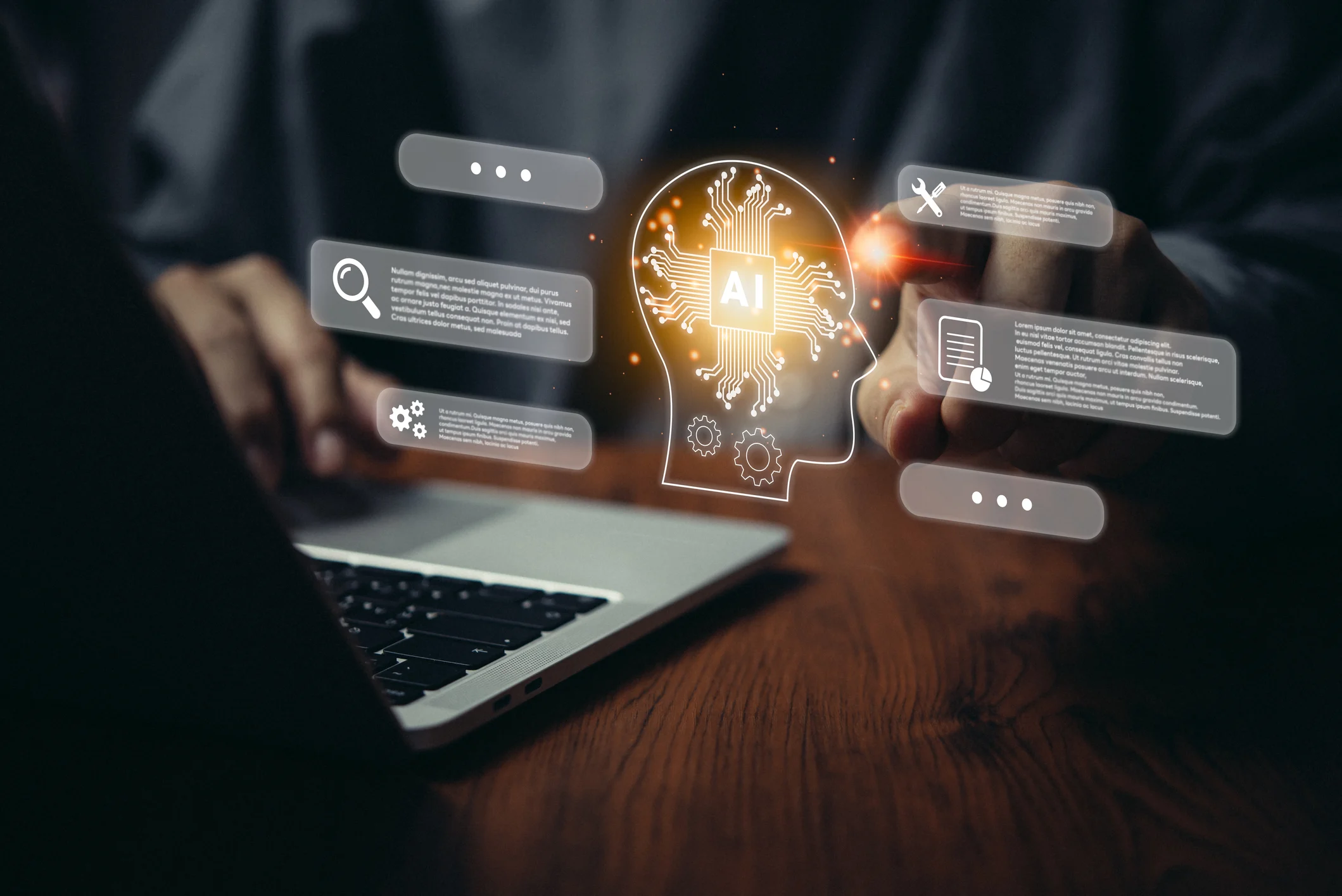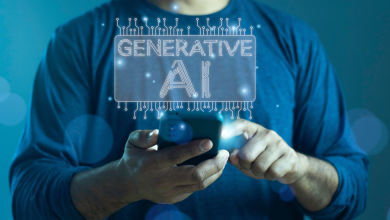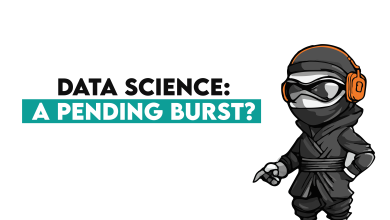
[ad_1]
When the steam engine was first invented, and massive industrial evolution began, everyone predicted a future in which factories would be completely workerless. People’s imagination (fueled by fearmongering) ran wild, and they imagined automated machines doing all the work, with just a few workers in supervisory roles.
Well, as we all know, this is not what factories look like in 2024. No one has replaced workers, and even in some of the most developed countries in the world, we’re centuries away from robots completely replacing humans.
What was automated were some of the most arduous tasks. Everything boring, physically hard, and dangerous was mitigated with the use of technology. This is a similar revolution to the one that AI brings.
Now, for people who are afraid that AI will push them completely out of their industry (with digital marketing being at the forefront of this struggle), here are a few things you should know. Here’s where AI is incredibly revolutionary (often better than even some of the best human specialists), and here are some fields/tasks where human touch will not be replaced anytime soon.
More importantly, here’s why the best equation is still the one that includes both humans and AI.
Impact of AI on link building
One of the first things worth examining is the impact of AI on link building services in 2024.
The biggest misconception is that AI technology is not leveraged for link-building services since there are no platforms that directly build links. Nothing could be further from the truth.
The first major impact of AI lies in the field of analytics. With the help of AI, you can now identify the most relevant and authoritative websites while taking other aspects of their search engine presence into consideration.
You see, while authority is a huge metric, it’s also broken down into categories and fields. An authority in one field won’t necessarily translate into another. A lot of inexperienced link builders make the mistake of believing that the domain is a great link-building opportunity just because it has a high DA (domain authority). The thing is that while high DA is always better than low DA, the impact will not be the same if it belongs to an unrelated niche.
With the help of AI, you can actually get a much better assessment of whether that particular link (on that particular site) will have an impact. The best part is that since link builders are often paying for the link, this can make it easier to establish whether the ROI of this particular partnership is worth it.
One process that took a lot of work hours for actual link-builders was long-term monitoring and analysis of links. A human marketer usually didn’t go as far back in time or failed to see patterns that modern AI computing can easily pick up.
AI in content marketing
Most importantly, AI won’t replace writers like it won’t replace data engineers.
The use of NLG (natural language generation) is one of the biggest selling points of AI in digital marketing (and link building), but it’s a field that you want to tread carefully through. You see, the myth of “Google penalizing AI” grew so quickly because many people drew conclusions from incomplete information.
Google values originality, and its “beef” with AI-generated content was mostly in the fact that it could only replicate what was already in the database. This meant that the content generated by AI was mostly “recycled” from other articles with no new insight or original thought.
Even then, Google didn’t really penalize it; it just failed to reward it the same way it rewarded human-generated content. The result, however, felt like AI content was being penalized. For all intents and purposes, the difference was very subtle and even completely irrelevant for marketers whose content didn’t get the desired results because it was made by AI.
Using AI tools as an assistant, fact-checking (even though its database is never really up-to-date and it won’t work on breaking news), and research are generally not bad ideas.
In 2024, it takes roughly four hours to produce an average blog post. This means that your writers are overworked. Getting some assistance in writing, directing, or editing content can be very helpful.
That’s the issue, you see. While much attention is given to the use of AI in creating content, little attention is given to its potential for content curation.
Many writers have amazingly creative ideas, so asking for guidance in matching the tone or language can go a long way. Style-tweaking is a massive bottleneck in writing, and now, there’s finally a potential way to overcome it.
Leveraging AI in social media marketing
Social media marketing is how most brands interact directly with their target audience. They send targeted messages, pop up in their feed, and, if their advertising budget is high enough, reach out to a huge portion of their target audience daily.
This is so effective that social media sales actually grow with each year and now represent a significant funnel for most brands.
Now, one of the things that human marketers weren’t really stellar at in the past was sentiment analysis. Sure, when a trend picks up and goes viral, it’s pretty easy to see if the narrative is positive or negative. The problem lies in the fact that the majority of brands don’t go viral, and analyzing sentiment from a few posts scattered across several social media platforms is all but simple.
Trends are always unpredictable, but they’re nowhere as dynamic as they are in the landscape of social media. Here, the majority of content is user-generated, which means that you have no idea what tomorrow brings. Fortunately, with AI insights into social media trends, you can pick future viral trends while they’re still relatively young.
While it may seem that finding influencers shouldn’t be that hard, you would be surprised to learn how difficult it is to find someone perfect for your brand. You see, a person who’s an authority figure in your industry is a perfect example of when a micro-influencer can punch well above their weight class.
Most of the time, your customers and content enjoyers are people with other interests. Finding other brands and creators with whom you overlap (when it comes to the audience) can create some surprisingly lucrative partnership opportunities.
Improvement of your email marketing
Email marketing is still incredibly cost-effective. However, to make it so, you need to grow your email list organically, automate various tasks related to email marketing, and personalize your messages. AI marketing can make all three of these things easier.
First things first, it’s worth mentioning that AI can take existing templates and easily adjust them to the sender. This is especially the case if you’re sending an email to someone with whom you already have correspondence or someone who is already in your CRM (customer relationship management) database.
The generative AI capability of these email marketing personalization functions is not to be underestimated either. Namely, according to some estimates, subject lines written by AI have 5-10% higher open rates.
While this may not seem like much, when you compare it to the total number of emails sent daily, things quickly grow out of proportion. While a human marketer can send hundreds of emails per day, an automation platform can send hundreds of thousands. With the help of AI, you can make this more efficient with greater personalization and even find a way to avoid throttling by your email service or internet provider.
Automated responses can also save you a lot of time and effort. Sure, this may sound like something that requires a more personal touch, but, in reality, the majority of email correspondence is pretty boilerplate. Since modern generative chatbots are so effective, they’re even better than human email responders (they respond instantly). The majority of your audience expects a response within four hours, but it’s always the sooner, the better.
Most importantly, even if you did make your list organically, you won’t know how good it is until you test it. With the right tool, you can regularly clean up your email list.
AI is a great enhancement for your human-run marketing campaign
Digital marketing requires a lot of finesse. It’s a field that requires an equal part of creativity and critical thinning. With AI there to help with both, it’s clear that this technological trend has a transformative effect on this industry. It saves countless hours for digital marketing professionals and helps them actually focus on those aspects of the industry that just cannot do without a human touch.
The post Digital Marketing and AI: What Works Magic and Where Do We Still Need Some Human Touch? appeared first on Datafloq.
[ad_2]





